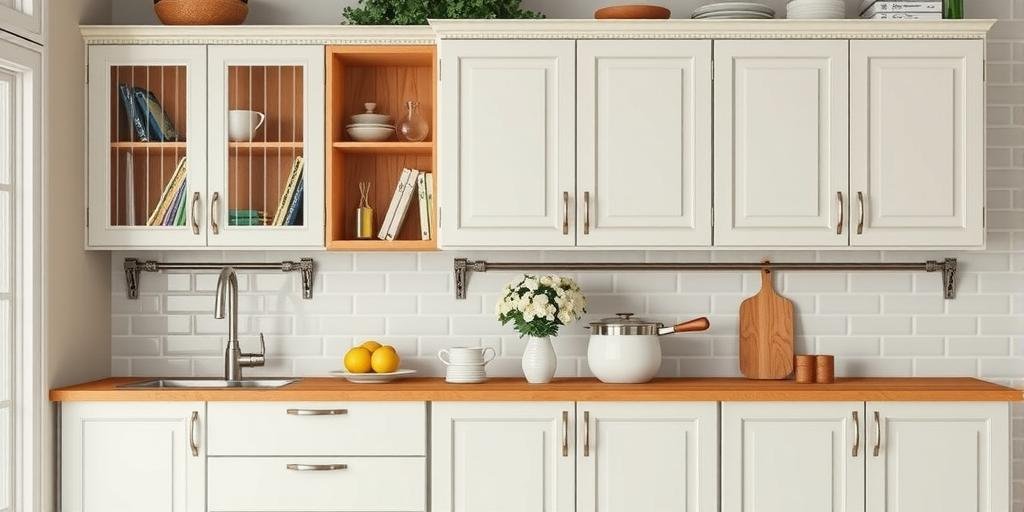When designing a kitchen, one of the most common questions homeowners have is how high should wall cabinets be. Getting the height right ensures optimal functionality, comfort, and visual appeal. This comprehensive guide will walk you through the ideal wall cabinet heights, factors influencing their placement, installation tips, and answers to frequently asked questions.
Standard Wall Cabinet Height Guidelines
While cabinet heights can be customized, there are industry standards that most builders and designers follow. These standards provide a starting point for most kitchen layouts.
Typical Wall Cabinet Dimensions
Wall cabinets usually come in a range of heights to suit different ceiling heights and design preferences. Here’s a table summarizing common dimensions:
| Cabinet Height | Cabinet Depth | Cabinet Width | Common Use |
|---|---|---|---|
| 12 inches | 12 inches | Various | Above refrigerators |
| 30 inches | 12-24 inches | Various | Standard wall cabinets |
| 36 inches | 12-24 inches | Various | For 8-foot ceilings without soffits |
| 42 inches | 12-24 inches | Various | For kitchens with 9-foot ceilings |
General Installation Height
- Distance from Floor to Bottom of Wall Cabinet:54 inches
- Distance between Countertop and Bottom of Wall Cabinet:18 inches
- Standard Base Cabinet Height (including countertop):36 inches
This places the bottom of the wall cabinets approximately 54 inches from the floor, which is the standard for most installations. The 18-inch gap provides ample workspace and accommodates small appliances.
Factors That Influence Wall Cabinet Height
While industry standards provide a good baseline, several factors can influence the final height of your wall cabinets:
Ceiling Height
The height of your kitchen ceiling is one of the biggest determinants:
- 8-foot ceilings: 30 or 36-inch cabinets work well. 36-inch cabinets often reach close to the ceiling for a seamless look.
- 9-foot ceilings: 42-inch cabinets can be used, or you can add stacked cabinets for extra storage and a luxury feel.
- Vaulted or unusually high ceilings: Consider double-stacked cabinets or open space above wall cabinets for decorative purposes.
Type of Kitchen Design
Your design style also impacts cabinet height:
- Traditional kitchens: Cabinets often extend to the ceiling with molding for a polished look.
- Modern kitchens: May leave space above cabinets for a more open, airy feel.
- Open shelving: Might replace wall cabinets entirely or complement them, affecting installation height.
User Height and Accessibility
Think about the people who will use the kitchen most:
- If primary users are shorter, consider lowering cabinets slightly for easier access.
- For taller users, maintaining or even slightly raising the cabinets can improve ergonomics.
Backsplash and Appliance Clearance
Allow enough space for backsplashes and appliances:
- Backsplashes: Standard height is 18 inches, but this can be increased for dramatic tile work.
- Appliances: Ensure there’s enough clearance for coffee makers, mixers, and other countertop appliances.
Special Cabinet Height Considerations
Cabinets Above Refrigerators
Wall cabinets above refrigerators are typically shorter:
- Height: Usually 12 or 15 inches
- Depth: Often 24 inches to align with refrigerator depth
- Used for infrequently accessed items
Microwave Cabinets
Over-the-range microwaves impact cabinet height:
- Follow manufacturer’s clearance recommendations, usually 13-18 inches from cooktop to microwave bottom
- Adjust cabinet height accordingly to maintain ergonomics and safety
Cabinet Height for Accessibility (ADA Compliance)
For accessible kitchens, cabinet height may be adjusted:
- Lowered wall cabinets or open shelving
- Reduced countertop height (28-34 inches instead of 36 inches)
- Pull-down shelving mechanisms
How to Measure and Plan for Wall Cabinet Height
Proper planning is essential for a functional and beautiful kitchen. Here’s how to measure and plan your cabinet installation:
Step 1: Measure Your Ceiling Height
Record the exact height from floor to ceiling. This determines maximum cabinet height and whether you want cabinets to reach the ceiling or leave space above.
Step 2: Determine Base Cabinet and Countertop Height
Standard base cabinet height with countertop is usually 36 inches. Adjust if using custom or ADA-compliant heights.
Step 3: Decide on the Backsplash Height
The typical gap is 18 inches, but this can be customized based on design and appliance clearance.
Step 4: Select Wall Cabinet Height
Choose from standard sizes based on ceiling height:
- 30-inch cabinets – leave space above for decorative items or moldings on 8-foot ceilings.
- 36-inch cabinets – nearly reach 8-foot ceilings.
- 42-inch cabinets – ideal for 9-foot ceilings.
Step 5: Plan for Special Features
Account for appliances, lighting, crown molding, or open shelving that can affect cabinet positioning.
Pros and Cons of Different Wall Cabinet Heights
| Cabinet Height | Pros | Cons |
|---|---|---|
| 30 inches |
|
|
| 36 inches |
|
|
| 42 inches |
|
|
Installation Tips for Wall Cabinets
Proper installation is crucial for safety and aesthetics. Here are some tips:
- Use a level to ensure cabinets are straight and even.
- Mark a horizontal line 54 inches from the floor to guide cabinet bottom placement.
- Install a temporary support ledger to hold cabinets during installation.
- Secure cabinets into wall studs with appropriate screws.
- Double-check measurements before drilling or anchoring.
- Consider professional installation for complex layouts or heavy cabinets.
FAQs About Wall Cabinet Heights
What is the standard height for wall cabinets above the countertop?
The standard distance is 18 inches from the countertop to the bottom of the wall cabinet. This provides enough workspace and appliance clearance.
How high should wall cabinets be from the floor?
Typically, the bottom of the wall cabinets should be 54 inches from the floor. This is based on a standard 36-inch-tall countertop with an 18-inch backsplash gap.
Can I customize my wall cabinet height?
Yes, you can customize wall cabinet height to fit ceiling height, user preferences, or specific design styles. However, sticking close to standards ensures comfort and resale appeal.
Should wall cabinets go up to the ceiling?
This depends on ceiling height and style. Extending cabinets to the ceiling maximizes storage and creates a seamless look, but leaving space above can provide room for decor and make the kitchen feel more open.
How do I choose the right wall cabinet height for an accessible kitchen?
For accessibility, lower the wall cabinets slightly or use pull-down shelving. Also, consider reducing countertop height for wheelchair access.
What about installing wall cabinets in bathrooms or laundry rooms?
Similar rules apply, but you may want to lower cabinets for easier access or align them with appliance heights, like washers and dryers.
Do I need a professional to install wall cabinets?
While skilled DIYers can handle installation, professional installers ensure perfect alignment, secure anchoring, and adherence to building codes.
Conclusion: Finding the Perfect Wall Cabinet Height
Choosing how high wall cabinets should be depends on a combination of industry standards, ceiling height, user needs, and personal design preferences. Following the standard 18-inch gap above countertops and aligning cabinet height with ceiling dimensions is a safe approach, but customizing for accessibility and style can enhance both function and aesthetics.
Take accurate measurements, plan carefully, and don’t hesitate to consult a kitchen design professional. The right wall cabinet height will make your kitchen more comfortable, efficient, and beautiful for years to come.

